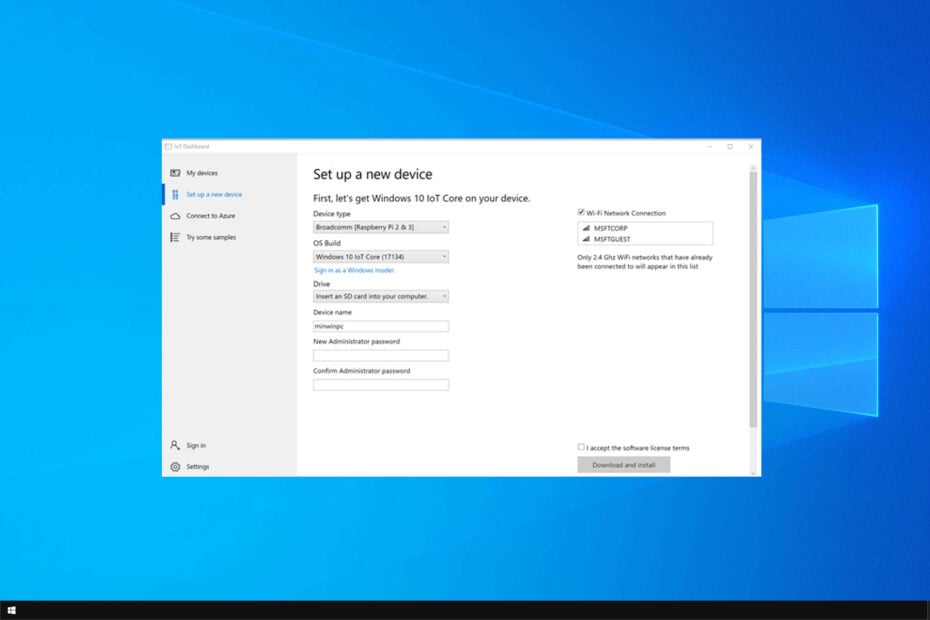With the rapid advancement of technology, IoT (Internet of Things) devices have become an integral part of our daily lives. These devices, ranging from smart home appliances to industrial sensors, require secure access for management and maintenance. One of the most secure methods for accessing IoT devices remotely is through SSH (Secure Shell). This article will guide you on how to configure and access IoT devices using SSH on Windows 10.
As IoT adoption continues to grow, understanding how to manage these devices securely is crucial. Whether you're a tech enthusiast or a professional, this guide will provide step-by-step instructions to help you connect to your IoT devices via SSH on Windows 10.
This article will also explore the importance of security, best practices, and troubleshooting tips to ensure your IoT device SSH access remains robust and reliable. Let's dive into the world of IoT device SSH access on Windows 10.
Read also:Kemono Focusedrelaxation
Table of Contents
- Introduction to IoT Devices
- Understanding SSH and Its Importance
- Enabling SSH on Windows 10
- Configuring Your IoT Device for SSH Access
- Connecting to IoT Devices via SSH on Windows 10
- Security Best Practices for IoT Device SSH Access
- Troubleshooting Common SSH Issues
- Advanced SSH Features for Windows 10
- Using SSH Clients on Windows 10
- Conclusion and Next Steps
Introduction to IoT Devices
IoT devices are everyday objects embedded with sensors, software, and connectivity features that allow them to exchange data with other devices and systems over the internet. These devices include smart thermostats, security cameras, wearable devices, and even industrial equipment. The ability to manage and monitor these devices remotely is essential for maximizing their functionality and ensuring they operate efficiently.
Types of IoT Devices
IoT devices can be categorized into several types:
- Consumer IoT: Smart home devices like smart lights, thermostats, and voice assistants.
- Enterprise IoT: Devices used in businesses, such as inventory management systems and smart HVAC systems.
- Industrial IoT: Equipment used in manufacturing and logistics, such as sensors and robotic systems.
Understanding SSH and Its Importance
SSH (Secure Shell) is a network protocol that provides a secure way to access remote devices over an unsecured network. It encrypts all data transmitted between the client and server, ensuring that sensitive information remains protected from unauthorized access.
Why Use SSH for IoT Devices?
SSH is particularly important for IoT devices because:
- It ensures secure communication between devices and servers.
- It supports authentication methods such as passwords and public key authentication.
- It provides a robust way to manage devices remotely.
Enabling SSH on Windows 10
Before you can access your IoT devices via SSH, you need to enable the SSH client on your Windows 10 machine. Here's how you can do it:
Steps to Enable SSH Client
- Open the Settings app on your Windows 10 computer.
- Go to "Apps" and click on "Optional Features."
- Click "Add a feature" and search for "OpenSSH Client."
- Select "OpenSSH Client" and click "Install."
Configuring Your IoT Device for SSH Access
To connect to your IoT device via SSH, you need to ensure that the device is properly configured to accept SSH connections. Here's a step-by-step guide:
Read also:Erlinket Website Legit
Steps to Configure IoT Device
- Ensure that the IoT device has SSH enabled in its settings.
- Set a static IP address for the device to make it easier to connect.
- Configure the firewall settings to allow incoming SSH connections on port 22.
Connecting to IoT Devices via SSH on Windows 10
Once both your Windows 10 machine and IoT device are configured, you can establish an SSH connection. Here's how:
Steps to Connect via SSH
- Open the Command Prompt or PowerShell on your Windows 10 machine.
- Type the following command:
ssh username@IP_address. - Enter your password or use public key authentication if configured.
Security Best Practices for IoT Device SSH Access
Security is paramount when dealing with IoT devices. Here are some best practices to follow:
Best Practices
- Use strong, unique passwords or implement public key authentication.
- Disable password authentication if possible and rely solely on keys.
- Regularly update firmware and software on your IoT devices.
Troubleshooting Common SSH Issues
Even with proper configuration, issues can arise. Here are some common problems and their solutions:
Common Issues
- Connection Refused: Ensure the SSH service is running on the IoT device.
- Authentication Failure: Verify your credentials or key files.
- Timeout: Check your network connection and firewall settings.
Advanced SSH Features for Windows 10
SSH offers several advanced features that can enhance your experience:
Advanced Features
- SSH tunnels for secure data transfer.
- SSH port forwarding for accessing internal networks.
- SSH configuration files for easier management of multiple connections.
Using SSH Clients on Windows 10
Besides the built-in SSH client, you can use third-party clients like PuTTY or MobaXterm for more advanced features:
Popular SSH Clients
- PuTTY: A lightweight and easy-to-use SSH client.
- MobaXterm: A powerful SSH client with additional tools for remote access.
Conclusion and Next Steps
Accessing IoT devices via SSH on Windows 10 is a secure and efficient way to manage your devices remotely. By following the steps outlined in this article, you can ensure that your connections are secure and reliable. Remember to adhere to best security practices to protect your devices from unauthorized access.
We encourage you to explore more about SSH and its capabilities. Feel free to leave a comment or share this article with others who might find it useful. For further reading, consider exploring advanced topics such as SSH tunneling and automation scripts.
Data Sources:


